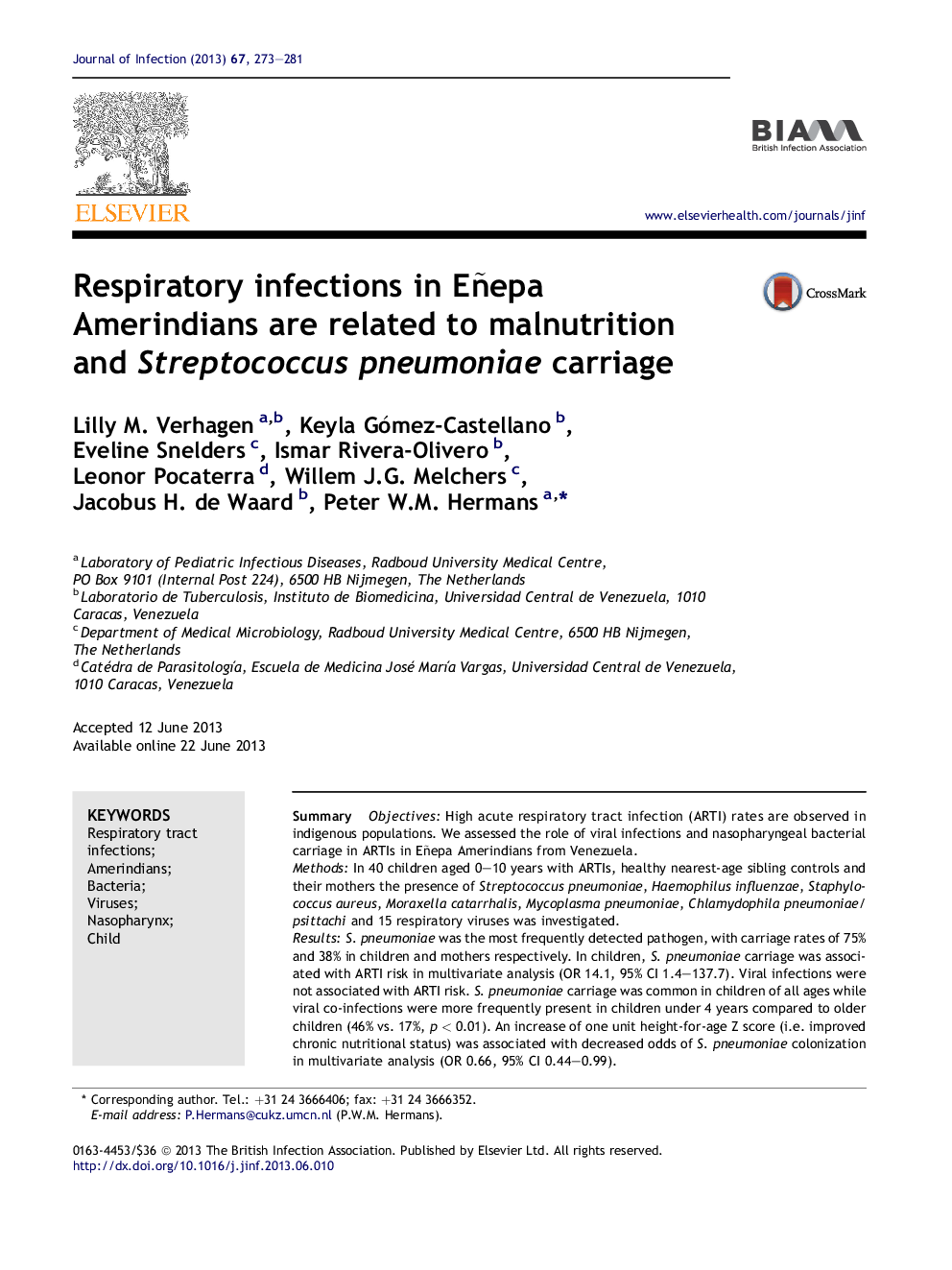| Article ID | Journal | Published Year | Pages | File Type |
|---|---|---|---|---|
| 3374919 | Journal of Infection | 2013 | 9 Pages |
SummaryObjectivesHigh acute respiratory tract infection (ARTI) rates are observed in indigenous populations. We assessed the role of viral infections and nasopharyngeal bacterial carriage in ARTIs in Eñepa Amerindians from Venezuela.MethodsIn 40 children aged 0–10 years with ARTIs, healthy nearest-age sibling controls and their mothers the presence of Streptococcus pneumoniae, Haemophilus influenzae, Staphylococcus aureus, Moraxella catarrhalis, Mycoplasma pneumoniae, Chlamydophila pneumoniae/psittachi and 15 respiratory viruses was investigated.ResultsS. pneumoniae was the most frequently detected pathogen, with carriage rates of 75% and 38% in children and mothers respectively. In children, S. pneumoniae carriage was associated with ARTI risk in multivariate analysis (OR 14.1, 95% CI 1.4–137.7). Viral infections were not associated with ARTI risk. S. pneumoniae carriage was common in children of all ages while viral co-infections were more frequently present in children under 4 years compared to older children (46% vs. 17%, p < 0.01). An increase of one unit height-for-age Z score (i.e. improved chronic nutritional status) was associated with decreased odds of S. pneumoniae colonization in multivariate analysis (OR 0.66, 95% CI 0.44–0.99).ConclusionsIn Eñepa children high S. pneumoniae carriage rates associated with a poor nutritional status contribute to the development of ARTIs.
